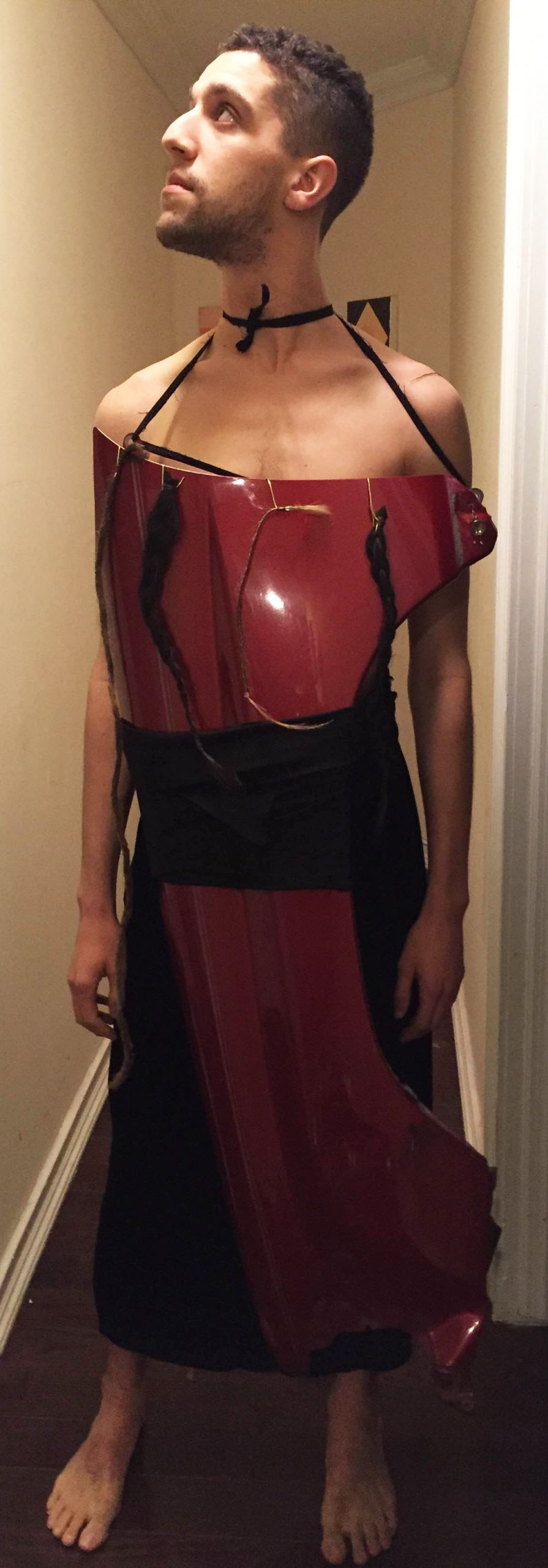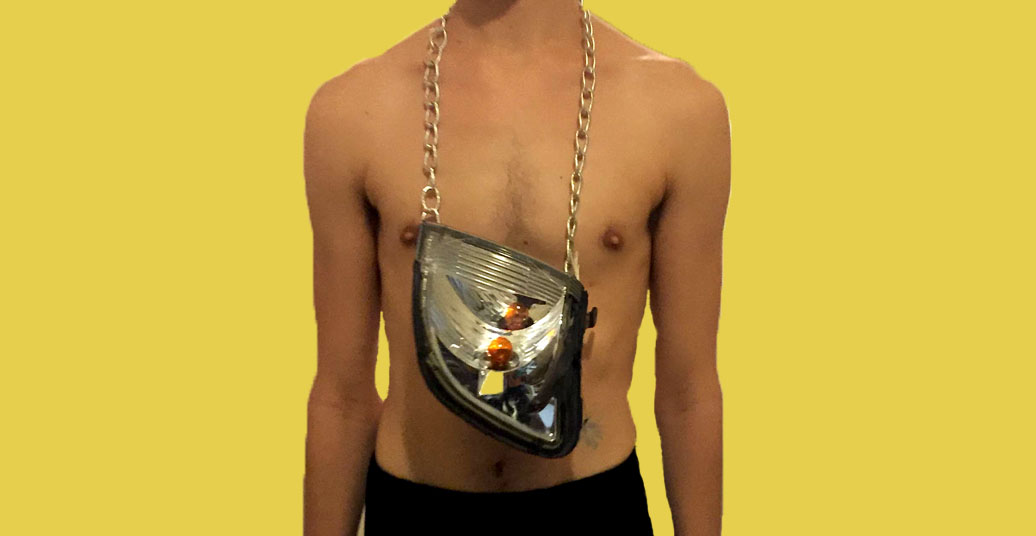When movement has been restricted due to the Corona pandemic, Inky Lee travels in her room.
She sits alone in her cold room in Berlin in the thick of the Covid lockdown, and reminisces about ways she used to move around through different cities, unrestricted. The title of Ralph Lemon’s performance, How Can You Stay in the House All Day and Not Go Anywhere? rings in her head, and she thinks, ‘That’s right. There are so many ways to go somewhere without literally moving my body through new places.’
When she lived in City A, she biked everywhere, although it was a vast desert where people mostly drove around in their private cars. Her room was located right next to a train track. Every night, freight trains passed by, shaking her entire room, including the bed. The rumble and the rocking of her body comforted her. It made her feel as though she was on the train. ‘Where am I going tonight?’ she used to wonder, smiling, as she lay half asleep. Now, her writing is the train that carries her away.
She spent most of her teenage years in City B, a city that is supposedly known for its excellent public transportation system. She had to get on a small bus every day to go to school. Each morning during the rush hour, there was a huge crowd of people determined to get on that bus no matter what. As the bus approached, they began to anxiously push and elbow each other. We never knew where precisely the bus was going to stop, and so the clumps of bodies swarmed around in suspense. When the bus finally chose its stopping place and its tiny door opened, everyone ran, and squeezed their bodies inside that four-wheeled rectangle as if their lives depended on it. People groaned and shouted, their bodies on top of each other’s, and their limbs exploding out through the windows. During these bus rides, she often experienced hard dicks rubbing against her from behind, and would try to snake away, but there was no room. If she failed to get on the bus and was late to school, the door guards caught her, ordered her to get into a plank pose, and slapped the back of her thighs or butt with a long thick wooden stick. The slaps bruised badly, and she playfully compared the bruises with those of her friends in the toilet.
The bus rides turned into long subway rides when she became a high school student. She had to arrive at school by 7 a.m. and stayed there till 10 p.m. In order to get there, she had to: Get on a bus that took her to the nearest subway station; get on the yellow subway line; transfer to the pink line, ride; transfer to the purple line, ride; come above ground; take a bus or walk. Since this trip took at least two-and-a-half hours one way, she spent more time on public transport than at home. Naturally, many odd episodes and encounters happened while using it. By the end of her time at high school, the routes had become a muscle memory. Sometimes, however, she would impulsively transfer to a random subway line and get off at an unknown station.
The navy blue line led to her grandma’s place. The khaki line led to a scenic river park that she discovered, and which became her retreat in times of stress. She could close her eyes and ride around and around on the green line, as it made its endless loops.Occasionally, she woke up with her head resting on a stranger’s shoulder. Many strangers slept on her shoulders too, and even on her lap. Many tired people dutifully dragged their bodies onto these earthworms moving under the city streets, and dozed off. From time to time, she would see drunk people resting, their bodies crammed into the small space between two subway cars.
How she enjoyed secretly observing the diversely beautiful people on the subway trains in City C. She once made an agreement with a friend, D, who also lived in City C, that they would photograph beautiful strangers in public spaces and send the photos to each other. One day, D ended up involuntarily following a stranger, because they were very beautiful. D reported that the stranger seemed lost, since they kept looking at their phone and turning around, which eventually led D to give up their pursuit.
In City C, trains ran 24 hours every day. However, the numerous delays and cancellations without explanations made their commitment to their own existence doubtful, which sometimes had an effect on her to doubt her own existence. Standing on a crowded train after a long day of work at a café, she gazed intently at the backs of her hands, the skin cracking open in dry yawns. Then, she heard the mystic whisper of a stranger asking, “What do you see?”
What did she see?
In City C, she saw rats everywhere. They seemed to have confidence in their existence, running around, lively on train tracks. She used to peer at them while waiting desperately for the train, and feel like she was one of them, scurrying around the city, trying to exist. When she felt like she couldn’t do it anymore, she rode the F train to the end to reach the ocean.
‘Oh, train please come. A or C, A or C.’ She received in a letter one day. The next letter read, ‘It was A.’ E wrote these letters when they were trying to get to her house in the middle of the night in City C. A trace of a confused romance that mostly unfolded in vehicles. They got to know each other in E’s car, when E offered to teach her how to drive. They would drive in circles in parking lots for hours every day in City A, until she crashed E’s car, and moved away to City C shortly after. The broken car parts, packed artfully by E, arrived at her house by mail. She didn’t know what to do with them. After some contemplation, she tacked hair she had received from various people onto the car parts and made them into costumes.

Kris Pourzal in Costume ©Inky Lee
When E decided to move to City C, she flew to City A, and they drove together across the country. On the way, they unexpectedly found themselves in the path of a powerful hurricane. Caught up in the flow of escaping residents, they drove on and on, trying to find a place to sleep.
All this endless movement is making her nauseous. She’s ageing (she hears thunderous laughter from afar), and needs to stay put. Or, in order not to feel nauseous, she must be the movement.
Close your eyes.
Feel what it feels like to be it.
A change of scene.
She is on a road trip with a stranger, F, who she just met in City G, where she travelled to. They travel horizontally across Country H, enter Country I, then return to City G. It’s very cold and windy, but they splash into the ocean to wash their bodies. They scream in the water.
They sit in front of the big lake in City J, where they make a stop that day. The seagulls struggle to fly against the strong wind. There’s no one around. It’s cold.
“Do you believe in reincarnation?” asks F.
“No,” she replies.
“If you did believe in it, what would you be?” asks F.
“The wind,” she answers.
“Wouldn’t it be very lonely to be the wind?” asks F.
“Not at all. I would fly around and play with the leaves, the ocean, people’s hair … I would touch people’s skin, swirl around in their ears … I would be free,” she answers.
She opens her eyes.
A big wind sweeps across the beach, whisking up a layer of fine sand that hisses like white snakes. Wandering souls in the wind, they swiftly move in curvaceous lines to meet the other lines in the waves.
Upon their reunion, they rush together into the water, and for a short while, quietly ride each other.





